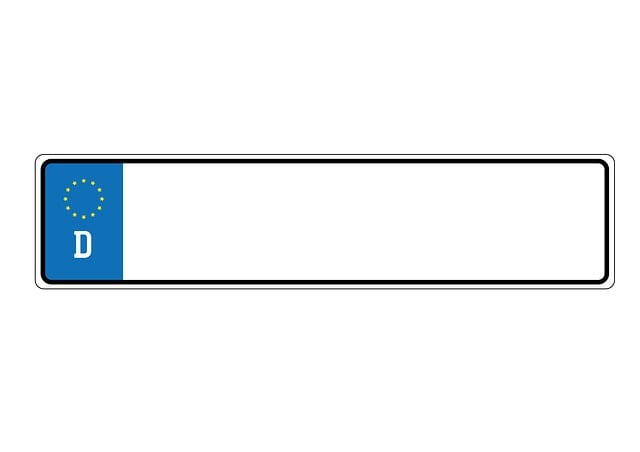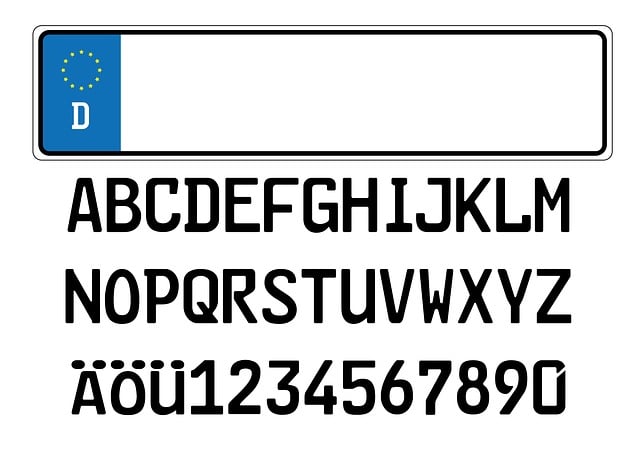A Vehicle Identification Number (VIN) is a 17-digit code that provides detailed information about a vehicle, including its manufacturer, model year, production facility, and safety data like recalls. Decoding this standardizes global vehicle history verification, empowering buyers to make informed decisions when purchasing cars, especially used ones. VIN checks reveal maintenance records, recall notices, and past issues, ensuring safer purchases and proactive safety measures.
A Vehicle Identification Number (VIN) is a powerful tool for any car buyer, offering insights into a vehicle’s history and safety features. This article guides you through the process of reading and interpreting a VIN, empowering you to make informed decisions when purchasing a vehicle. From identifying the manufacturer and model to checking for safety recalls, understanding VIN standards like ISO 3779 is crucial in today’s global car market. By learning how to decode a VIN, you can avoid unexpected surprises and ensure your new or used car is safe and trustworthy.
- Decoding VIN: Unlocking Manufacturer & Model Info
- Safety First: Using VIN for Recall Checks
- Global Market Access with ISO 3779 Standards
- Preventing Surprises: The Importance of VIN History
- How to Read a VIN Number: Step-by-Step Guide
- Resolving Recalls: Taking Action After VIN Check
- Trustworthy Purchases: Benefits of VIN Verification
Decoding VIN: Unlocking Manufacturer & Model Info

Decoding a Vehicle Identification Number (VIN) is like opening a secret code, offering insights into your vehicle’s identity. Each character within the 17-digit VIN holds a specific meaning, providing details about the manufacturer, model year, and production facility. For instance, the first three characters represent the manufacturer, allowing you to identify whether it’s Ford, Toyota, or any other producer. The fourth through eighth positions reveal the model type, such as sedan, SUV, or truck, along with the body style and engine specifications.
By deciphering this unique code, car buyers can make more informed choices. It becomes easier to compare similar models from different years and manufacturers, ensuring you get the best value for your money. Moreover, knowing the exact model and production details enables buyers to access essential safety information, including recall notices, which could save them from potential hazards down the line.
Safety First: Using VIN for Recall Checks

When buying a vehicle, safety should always be the top priority. One effective way to ensure the car’s safety history is through a simple VIN check. By using the unique Vehicle Identification Number (VIN), buyers can access crucial information about recall campaigns and safety features directly from the manufacturer. This process allows individuals to verify if any known issues or outstanding recalls exist for that specific vehicle, giving them peace of mind and ensuring they’re not left with unexpected repairs or safety hazards.
The ISO 3779 standards further facilitate this process by providing a standardized format for VINs, making it easier to decode and access data. This is particularly beneficial when purchasing a used car, where the absence of a clear vehicle history could be a significant risk. A quick VIN check can reveal the vehicle’s past, including any service records or recall notifications, empowering buyers to make informed decisions and potentially saving them from costly surprises.
Global Market Access with ISO 3779 Standards

The global car market has become a vast and intricate web, offering consumers a wide array of vehicle options from different manufacturers worldwide. However, this accessibility comes with challenges, particularly when it comes to ensuring the authenticity and safety of a vehicle’s history. Here is where ISO 3779 standards play a pivotal role. This international standard for VINs provides a uniform framework that allows buyers and sellers to easily access and interpret vehicle identification numbers from various countries.
By adopting these standards, car dealers, buyers, and even individuals conducting used-car research can seamlessly cross-reference VINs across borders. This enables them to uncover vital information about a vehicle’s origin, maintenance history, and any recalls or issues reported globally. With just a few simple steps, one can now verify the integrity of a vehicle’s record, making international car purchases safer and more informed.
Preventing Surprises: The Importance of VIN History

A Vehicle Identification Number (VIN) acts as a unique fingerprint for each car, offering a wealth of information to prospective buyers. Decoding this number provides insights into the vehicle’s history, including its manufacturing details and any safety-related updates or issues. One of the most critical aspects of VIN history is preventing surprises after making a purchase. Used car buyers, in particular, can face unexpected challenges if they don’t conduct a thorough check.
By accessing a VIN decoder, individuals can uncover crucial facts about previous owners, service records, and, most importantly, any outstanding safety recalls or issues. This proactive step ensures that what seems like a great deal doesn’t turn into a costly mistake. With global car markets becoming more accessible, the ISO 3779 standards facilitate cross-border transactions by providing a standardized way to verify vehicle history, making it easier for buyers to avoid potential pitfalls and make informed choices.
How to Read a VIN Number: Step-by-Step Guide

To read a VIN number accurately, start by identifying the 17 characters—including letters and numbers—that make up this unique identifier. Each character holds specific information, making it more than just a random sequence. The first three digits represent the vehicle’s manufacturer, while the fourth to eighth characters indicate the model year, body style, and other vital details.
The middle section of the VIN is where things get interesting. Characters 9 to 12 reveal the production plant code and serial number, providing insights into where and when your car was assembled. The last four digits are typically used for country of origin and individual dealer identification. With ISO 3779 standards in place, decoding a VIN has become more accessible, allowing buyers to quickly verify vehicle history and safety records.
Resolving Recalls: Taking Action After VIN Check

After conducting a successful VIN check, which provides a comprehensive vehicle history report, it’s crucial to take appropriate action regarding any recall information revealed. Recall notices are issued by manufacturers when defects or issues are identified in specific models, often related to safety. If your VIN number is associated with an open recall, the next step is to contact your local dealership or the manufacturer directly.
Most automakers offer free recall services, where they will inspect and repair or replace any faulty components at no cost to you. It’s important to stay proactive and ensure that these issues are addressed promptly to maintain the safety and value of your vehicle. Regular updates on recalls can be received through dealer notifications or by signing up for manufacturer alerts, ensuring you’re always aware of any potential actions required for your vehicle.
Trustworthy Purchases: Benefits of VIN Verification

When purchasing a vehicle, whether new or used, verifying the Vehicle Identification Number (VIN) offers immense advantages for buyers. It acts as a powerful tool to ensure that the car you’re considering is free from any hidden issues or potential safety hazards. A simple VIN check provides access to extensive information about the vehicle’s history, including its manufacturing details, previous owners, and—most critically—any outstanding safety recalls or maintenance requirements.
By utilizing this process, buyers can make informed decisions, avoiding costly surprises post-purchase. It empowers individuals to protect their investments and, more importantly, their safety by identifying potential risks associated with a particular vehicle. This transparent approach to car buying fosters trust between sellers and buyers, ensuring that every transaction is based on accurate and accessible information.
A Vehicle Identification Number (VIN) is your powerful tool for ensuring vehicle safety and making informed purchases. By decoding the VIN, you gain access to critical information about the manufacturer, model, and even unresolved safety recalls. With global car markets expanding, ISO 3779 standards make VIN interpretation easier than ever. A simple VIN history check can prevent costly surprises and ensure your next vehicle is a trustworthy companion on the road ahead.



